- | Government Spending Government Spending
- | Data Visualizations Data Visualizations
- |
CBO Projections Reveal the Extent of the United States’ Mandatory Spending Problem
The Congressional Budget Office (CBO), in its recently released Budget and Economic Outlook: 2018 to 2028, revised upward its federal deficit projections for the next 10 years: instead of reaching 5 percent of GDP by 2027, the deficit is now projected to reach 5.4 percent of GDP by 2022. The increase is the result of a continued explosion in mandatory spending and interest payments and of short-term declines in revenues proceeding from the recent tax cuts.
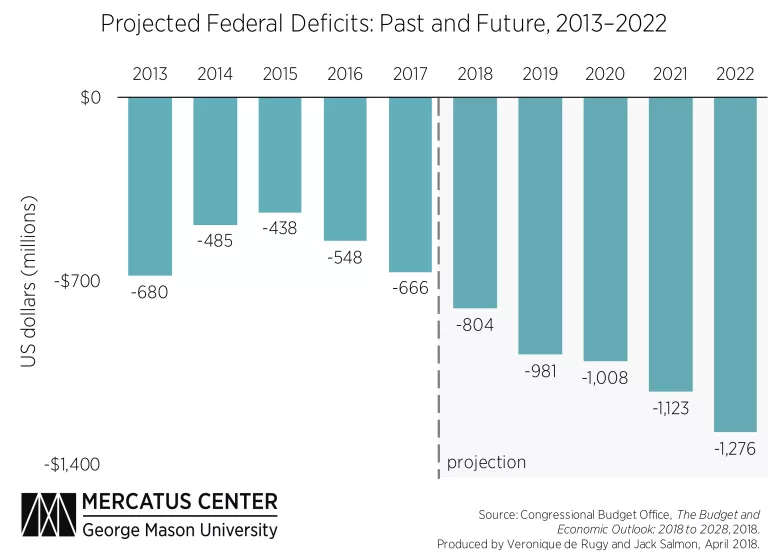
These latest projections also show how much larger the deficit and debt will be in the coming years than what the CBO had previously estimated in 2017.
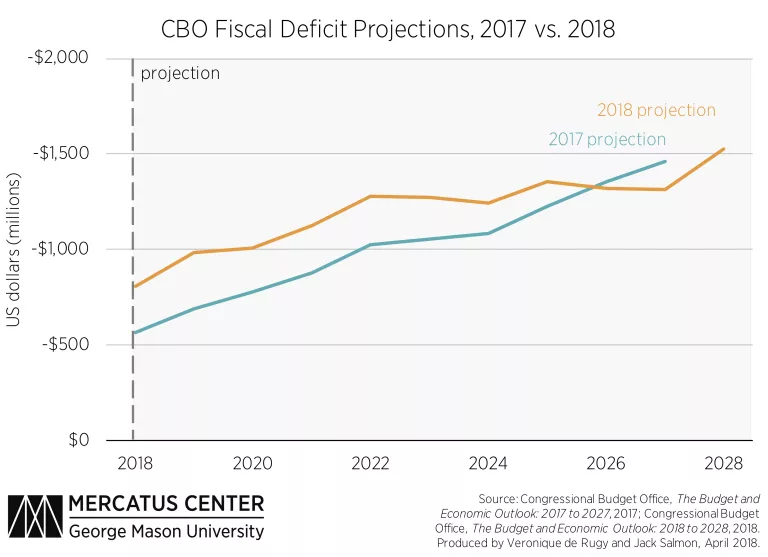
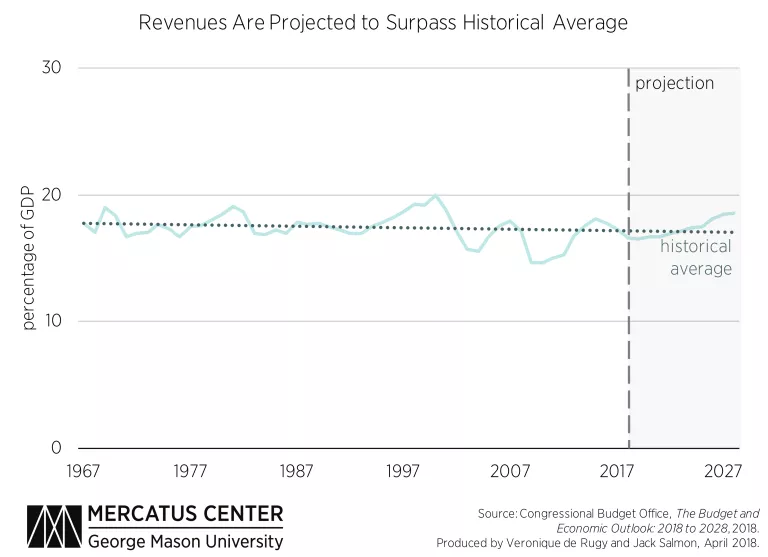
Looking at the long-term outlook, between 2017 and 2047 the combined deficit resulting from Social Security, Medicare, and interest payments will total $82 trillion.
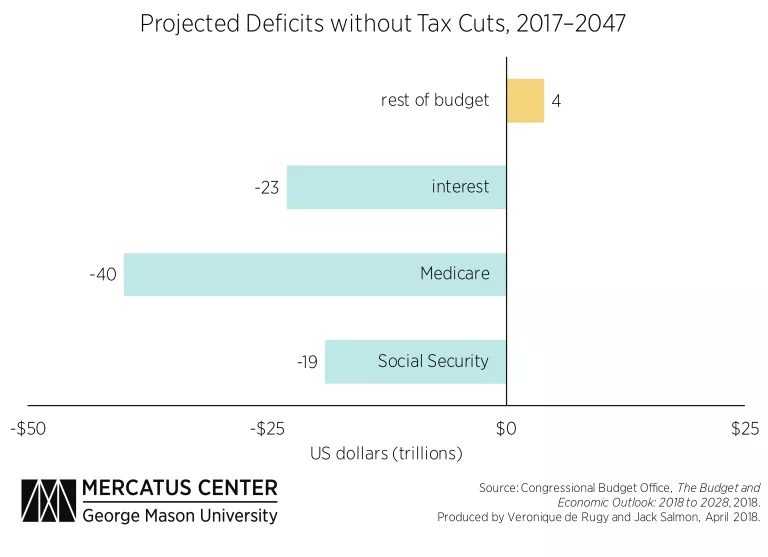
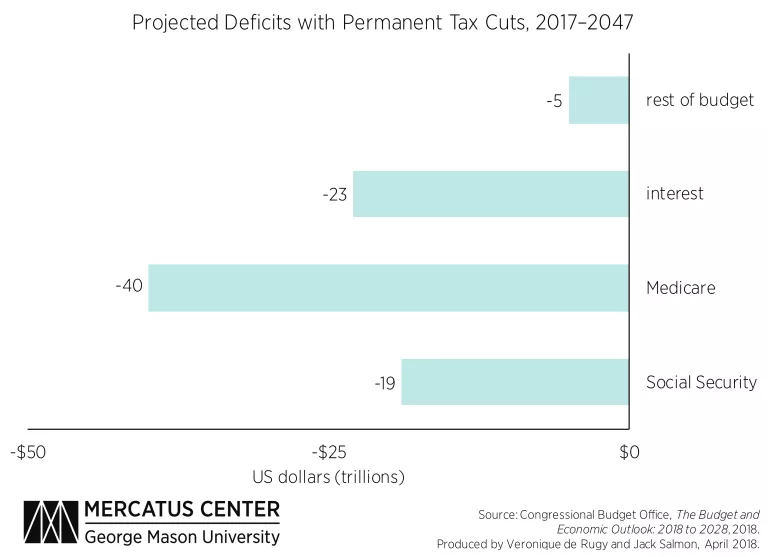
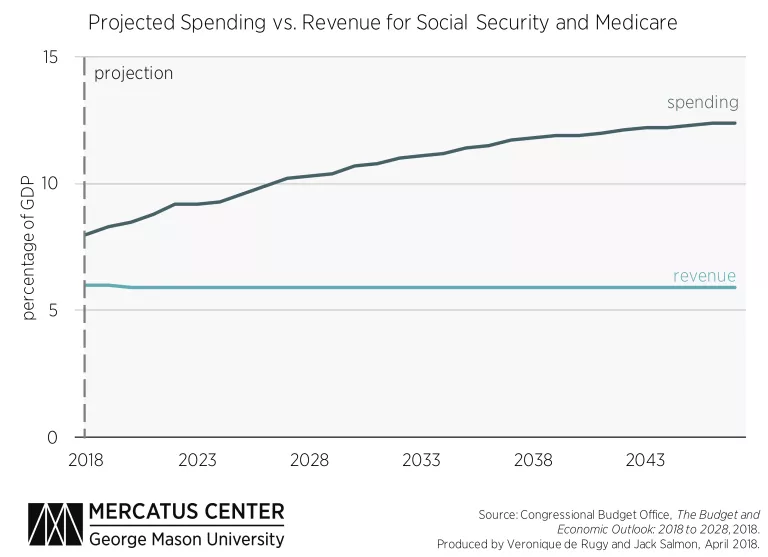
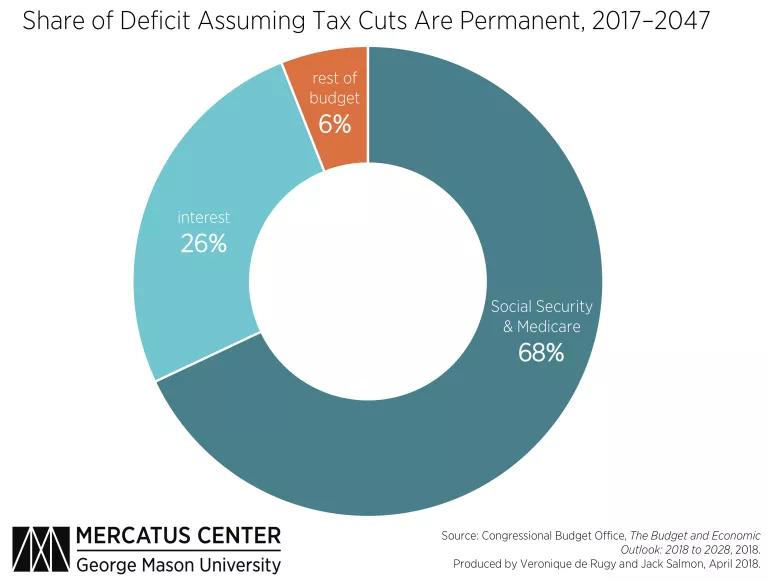
US debt is growing and it’s growing fast. But while it is a shame that lawmakers passed tax cuts without cutting spending to offset short-term losses in revenue, there is no doubt that Social Security and Medicare deficits are major drivers in the debt crisis to come.

